-
 +4 +1
+4 +1Nearby Alien Planet May Be Capable of Supporting Life
One of the nearest exoplanets to Earth, Ross 128b, may be a decent abode for life, a new study suggests.
-
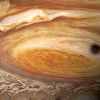 +11 +1
+11 +1Astronomers just discovered 12 new moons around Jupiter
A team out of the Carnegie Institution for Science haven't just discovered one new moon, they've discovered 12. All around the planet Jupiter. And these moons are helping us understand why Jupiter has so many moons in the first place.
-
 +46 +1
+46 +1Liquid water 'lake' revealed on Mars
Researchers believe they have found the first existing body of liquid water on the Red Planet.
-
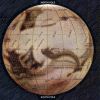 +24 +1
+24 +1How Mars’s Close Encounters Helped Us Map the Red Planet
National Geographic’s archive has maps of Mars dating back to when some scientists still thought there might be Martian-made canals on its surface. By Betsy Mason.
-
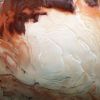 +17 +1
+17 +1Layers of the South Pole of Mars
What lies beneath the layered south pole of Mars? A recent measurement with ground-penetrating radar from ESA's Mars Express satellite has detected a bright reflection layer consistent with an underground lake of salty water. The reflection comes from about 1.5-km down but covers an area 200-km across. Liquid water evaporates quickly from the surface of Mars, but a briny confined lake, such as implied by the radar reflection, could last much longer and be a candidate to host life such as microbes. Pictured, an infrared, green, and blue image of the south pole of Mars taken by Mars Express in 2012 shows a complex mixture of layers of dirt...
-
 +2 +1
+2 +1No seriously, Elon. We can't just nuke Mars
On Monday, a study published in Nature Astronomy took an exhaustive look at what it would take to terraform the Red Planet and fulfill generations of sci-fi dreams. In it, leading Mars experts tallied the planet’s stores of carbon dioxide, a powerful greenhouse gas, and gauged the likelihood of releasing all that CO2 to create a stable atmosphere — one thick enough to have liquid water on the surface.
-
 +18 +1
+18 +1These strange worlds are too hot to be planets, and too cool to be stars
Ultra-hot Jupiters are a new class of exoplanets that astronomers are increasingly finding scattered throughout the cosmos. These incredibly hot gas giants sit much closer to their host stars than Mercury does to the Sun, which invariably leads to tidal locking — meaning the same side of the planet always faces the star. This causes dayside temperatures to exceed 3,500 degrees Fahrenheit (1,900 Celsius), while nightside temperatures hover around 1,800 F (1,000 C). Furthermore, ultra-hot Jupiters display unique atmospheric characteristics that are not seen in other types of planets, such as an apparent lack of most molecules.
-
 +8 +1
+8 +1Hottest of 'ultra-hot' planets is so hot its air contains vaporised metal
New observations of the hottest known planet have revealed temperatures similar to those typically seen at the surface of a star, as well as an atmosphere of vaporised iron and titanium. The findings add to the diverse and, in some cases, extreme conditions seen on planets far beyond our own solar system. Kevin Heng, a professor at the University of Bern, and co-author of the latest work, said: “The temperatures are so insane that even though it is a planet it has the atmosphere of a star.”
-
 +7 +1
+7 +1Water-Rich Planets Are Common But Only Outside Our Solar System: Study
Water is likely to be a major component of those exoplanets which are between two to four times the size of Earth, suggests new research that may have implications for the search of life in our galaxy. Water has been implied previously on individual exoplanets, but this work, presented at the Goldschmidt conference in Boston, Massachusetts, concludes that water-rich planets outside our solar system are common.
-
 +1 +1
+1 +1World Economic Forum: There Are Blockchain Solutions For Saving Our Environement
According to the World Economic Forum, there are more than 60 blockchain use cases for solving all the serious environmental challenges that are endangering our planet. The Swiss-based World Economic Forum issued a report named ‘’Building Block(chain) for a Better Planet’’. In that report, you can see all the highlighted blockchain solutions that can potentially […]
-
 +8 +1
+8 +1The first science image from NASA’s TESS exoplanet hunter is mind-boggling
NASA’s TESS spacecraft — that stands for Transiting Exoplanet Survey Satellite, in case you had somehow forgotten — is an incredibly powerful tool for spotting distant worlds. It was launched back in April, but it took some time to get the satellite up to speed and begin working on actual science objectives. Now, in a demonstration of its power, NASA is showing off the first science image the satellite has captured, and boy is it a beauty. The image is absolutely packed with stars, taking a half hour to soak in the light and produce the collection of pictures you see below.
-
 +8 +1
+8 +1It’s Official: Researchers Have Discovered A Second Earth
Researchers have confirmed the existence of a SECOND Earth located in the Proxima Centauri System. The planet is believed to have oceans just like Earth and may host alien life. In the past, thousands of exoplanets have been discovered in the universe, but none of them is like Proxima B. Proxima b, as has been baptized, has very ‘promising characteristics’: it is probably rocky, slightly more massive than our own planet and is located in the region around its star that would allow liquid water on its surface to exist.
-
 +13 +1
+13 +1Pluto Should Be a Planet and So Should Earth's Moon, New Study Claims
Sing along if you know the words: When the moon hits your eye, like a big pizza pie, that's a planet! That's what ancient Greek stargazers thought, anyway. And according to a team of astronomers writing online Aug. 29 in the journal Icarus, maybe it's time we started thinking of Earth's trusty satellite — plus demoted dwarf planets like Pluto and Ceres — as a full-fledged planets once again.
-
 +12 +1
+12 +1'The Goblin': New Distant Dwarf Planet Bolsters Evidence for Planet X - D-brief
Far beyond the orbits of the solar system’s eight planets, astronomers have found another object they’ve nicknamed “The Goblin.” It’s a small world traveling a lonely path through the outer reaches of our cosmic neighborhood, and joins a small club of dwarf planets and other planet-like objects out beyond Neptune.
-
 +32 +1
+32 +1The Last Days of Venus as the Evening Star
That's not a young crescent Moon poised above the hills along the western horizon at sunset. It's Venus in a crescent phase. About 54 million kilometers away and less than 20 percent illuminated, it was captured by telescope and camera on September 30 near Bacau, Romania. The bright celestial beacon is now languishing in the evening twilight, its days as the Evening Star in 2018 coming to a close. But it also grows larger in apparent size and becomes an ever thinner crescent in telescopic views.
-
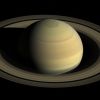 +19 +1
+19 +1Saturn's rings made of surprising chemical mix
Political humorist Mark Russel once joked, “The scientific theory I like best is that the rings of Saturn are composed entirely of lost airline luggage.” Well, there’s no luggage, it turns out. But a new study appearing in Science based on data from the final orbits last year of NASA’s Cassini spacecraft shows the rings of Saturn — some of the most visually stupendous objects in the universe — are far more chemically complicated than previously was understood.
-
 +12 +1
+12 +1Breathing life into our planet and others
A new study has produced a detailed estimation for when there was enough oxygen in the Earth’s atmosphere to support large land-based life, such as dinosaurs and eventually humans. The findings could help fill in the gaps in our understanding of the evolution of Earth’s ecology and could provide useful evidence when considering if other planets could support large oxygen-dependent life.
-
 +10 +1
+10 +1Giant planets around young star raise questions about how planets form
Researchers have identified a young star with four Jupiter and Saturn-sized planets in orbit around it, the first time that so many massive planets have been detected in such a young system. The system has also set a new record for the most extreme range of orbits yet observed: the outermost planet is more than a thousand times further from the star than the innermost one, which raises interesting questions about how such a system might have formed.
-
 +11 +1
+11 +1Was life on the early Earth purple?
Early life-forms on Earth may have been able to generate metabolic energy from sunlight using a purple-pigmented molecule called retinal that possibly predates the evolution of chlorophyll and photosynthesis. If retinal has evolved on other worlds, it could create a a distinctive biosignature as it absorbs green light in the same way that vegetation on Earth absorbs red and blue light.
-
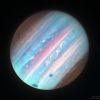 +23 +1
+23 +1Jupiter in Ultraviolet from Hubble
Jupiter looks a bit different in ultraviolet light. To better interpret Jupiter's cloud motions and to help NASA's robotic Juno spacecraft understand the planetary context of the small fields that it sees, the Hubble Space Telescope is being directed to regularly image the entire Jovian giant. The colors of Jupiter being monitored go beyond the normal human visual range to include both ultraviolet and infrared light.
Submit a link
Start a discussion




















